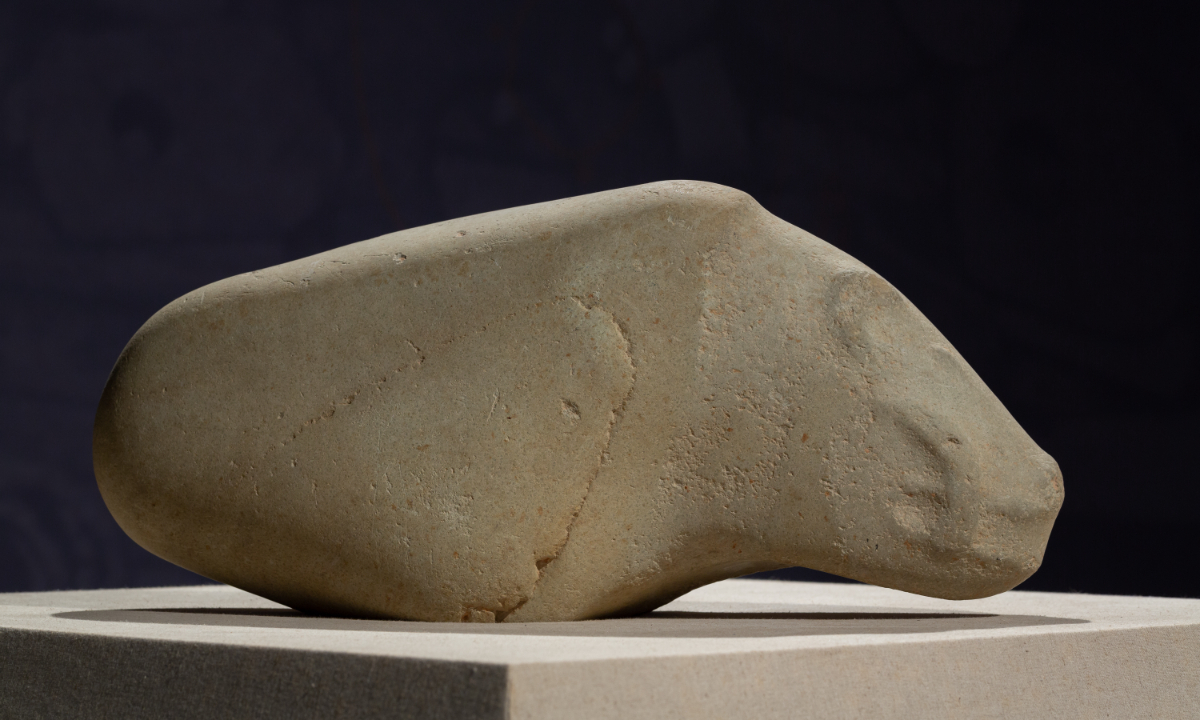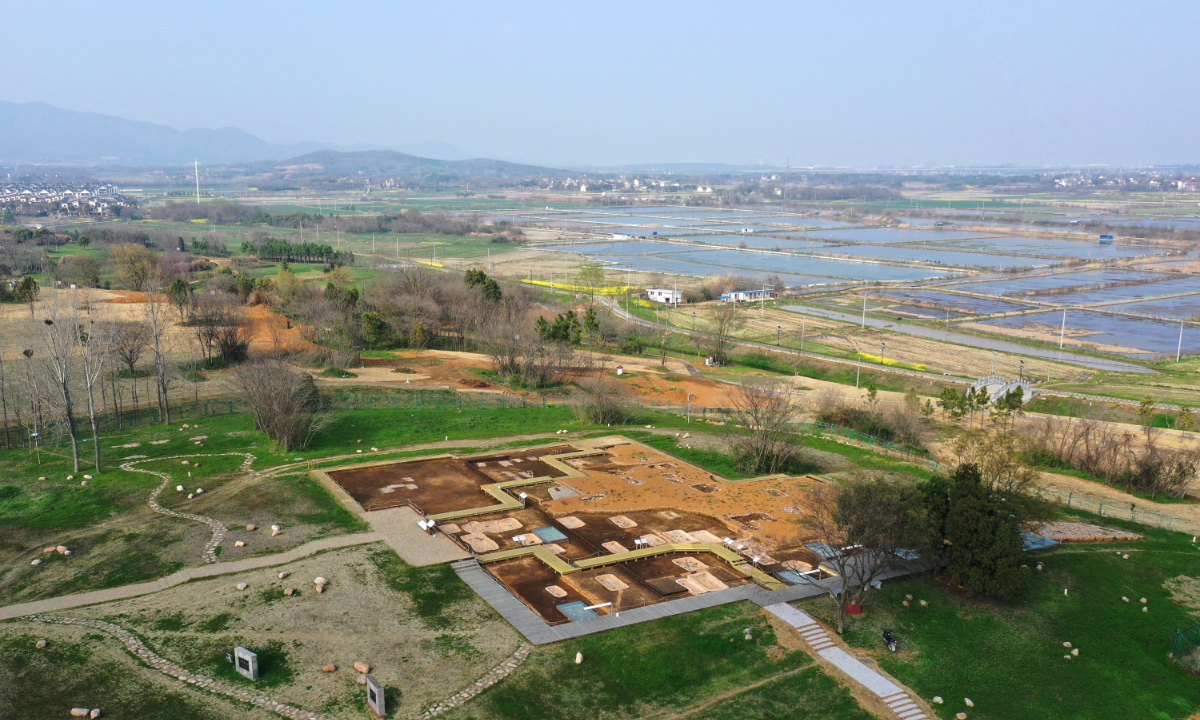
A pig-shaped jade carving Photo: VCG
At the site of a Neolithic settlement in East China's Anhui Province that dates to 5,800 to 5,300 years ago, Chinese archaeologists are busy cleaning numerous cultural relics, mainly a variety of jade wares, that have been excavated from under the earth.
The latest discoveries at the Lingjiatan Ruins in Ma'an, Anhui Province, have stunned Chinese archaeologists. Dozens of tombs containing jade and stone burial objects were discovered around an altar at the center of the ruins, according to a press release from the Anhui Provincial Institute of Archeology.
One of the newly unearthed jade wares, a uniquely shaped carving with the head of a dragon, has become a star relic during the archaeological research.
Compared with the exquisitely carved jade artifacts discovered in the Liangzhu Culture sites in Zhejiang Province, the jade relics at the Lingjiatan Ruins are more "diverse" and represent "an ancient Chinese etiquette system," Qian Xiaogang, a researcher of ancient art, told the Global Times.
The Lingjiatan Ruins are important for the study of the origins of Chinese civilization as its "ancient creativity" is similar to that found in the Sanxingdui Ruins, Qian noted.
Great excavationChinese archaeologists had excavated around 1.6 million square meters over more than five excavations at the Lingjiatan Ruin site before the latest excavation of the sacrificial pits, which was part of a project tracing the origins of Chinese civilization in the lower reaches of the Yangtze River, experts at the Anhui Provincial Archeological Institute told the Global Times.
Among the more than 400 newly unearthed objects from the sacrificial pits were numerous fine jades, stone implements and pottery vessels.
The jades are among the most significant discoveries at the site. The unearthed wares have mostly been small broken ornaments, such as jade jue, a type of wine vessel. There have also been some new shapes such as jades shaped like gears, oval ornaments and combs.

The Lingjiatan Ruins Photo: VCG
During the recent excavation, archeologists found the largest jade huang - a semicircle-shaped ornament - unearthed at the site so far and another jade with a completely unique shape.
The unique jade shows exquisite workmanship. One end is carved into a dragon head and the other end is tapered. The excavation of the dragon head-shaped jade and other special jade objects are of great significance for the study of the prehistoric jade system in China and its influence on later ritual systems. It's discovery was a milestone event in the archaeological history of the Lingjiatan Ruins, according to researchers at the site.
During previous excavations, archaeologists discovered a jade pig. Starting with a piece of jade that was already relatively shaped like a pig, the sculpture was made with a minimum of carving. It measures about 72 centimeters in length, 32 centimeters in width and weighs 88 kilograms. It has projecting lips with two upward pointing tusks sticking out and a nose with two nostrils.
Pottery and stone wares have also been found in abundance at the site. These wares have a large diversity of shapes and functions such as cooking tools and weapons, which reflect the social life of the people who lived during the Neolithic period in the lower reaches of the Yangtze River.
Archeologists also found a large area of burnt brown soil at the site. They believe that this soil marks the remains of a large-scale high-grade public building, which shows that the people of the time made use of buildings with clear ceremonial functions.
Creativity from the pastQian noted that including the large half-circle jade pendants, more than 20 types of jade relics have been found at the Lingjiatan Ruins.
"Though the very early techniques used to make the jade relics were a bit primitive, they all reflect how jade culture was a part of ancient Chinese etiquette systems. Many of these objects were everyday use items, not only ritual tools, but also tools of production, like axes," Qian said.
"Like the Sanxingdui 'gold mask,' the Lingjiatan Ruins also have some very mysterious jade totems such as jade human figures and eagles."
The Neolithic jade culture in China is one of the important parts of the origin of Chinese civilization and can reflect the creativity of ancient Chinese people.
Remarkably sophisticated jade pieces appeared in China after 2500 BC in the Liangzhu Culture of southern Jiangsu and northern Zhejiang provinces. The apparent lack of wear on the items suggests that they were primarily ceremonial items. These include the first examples of the flat, perforated bi disk, which became the symbol of Heaven in later times, and of the cong, a long square tube with a cylindrical hollow interior.
Qian said that such relics show the ancient creativity of Chinese people. Whether the relics were born from the pure imagination of the people of the time or influenced by some other cultures are significant questions for Chinese civilization research, and with every new discovery the answers continue to grow clearer.





